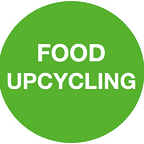What matters more in Innovation? Quantity or Quality?
A very relevant but little-discussed question is whether the success of innovation with a carefully crafted idea is higher than with several simultaneously superficially pursued ideas?
Statistically, approximately 65% to 80% of all newly launched consumer goods fail after one year. It would therefore make sense to launch as many new products as possible in order to be successful. Quantity would be the first choice. Such a strategy would consume many resources, because four out of five products fail. A successful product must outperform four flops and can be therefore considered as risky.
It is now obvious that it would be better if the focus is on an idea that works very well to keep the risk of loss as low as possible. Quality of the idea would be considered as the highest maxim. This strategy minimizes the risk of loss considerably, but statistically leads to a lower success rate. Because if fewer ideas come onto the market, fewer products can remain on the shelves. In many companies, this is the preferred way in innovation management.
From the previous examples, both ways are associated with clear economic disadvantages for a company. Either too few successful ideas come to the market or the high number of failed ideas consume too many resources.
Well, how do we solve this problem? We know by definition that innovation is a positive assessment of an idea through a social system (Csikszentmihalyi, 2014). Therefore, the KPI cannot be simply the number of newly created ideas in a company, but rather the amount of positively assessed ideas. A pipeline with new concepts for the next five years makes little sense, as long as these ideas have never been assessed. Strive for judgment as cost-effective as possible. There are a variety of approaches that explain how to do that.
The social system is also important because it judges these newly created ideas. Some might say the target group is this social system. Of course, but first think about your own company. Who judges the ideas? Are there any objective criteria? How long does it take? If you can answer these questions, you will be ready to bring many high quality ideas to the market. Then you start thinking about your target group and how the evaluate your new ideas.
Mirko Stanic is the Author of the ebook “Innovation in the Fast-Moving Consumer Goods Industry,” where he writes about the new innovation process for the FMCG industry. Download the ebook for Amazon Kindle http://amzn.to/2EwKx71
Reference
Csikszentmihalyi, Mihaly. (2014). The systems model of creativity (Vol. Vol. 1, The collected works of Mihaly Csikszentmihalyi). Dordrecht: Springer.
